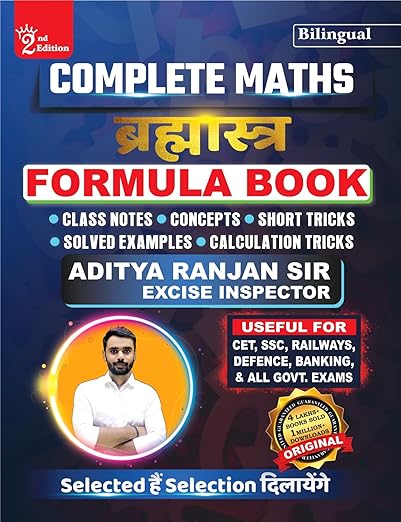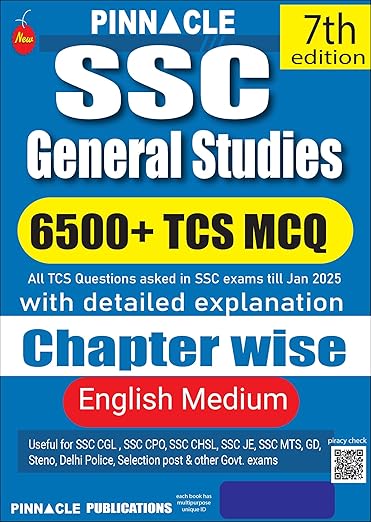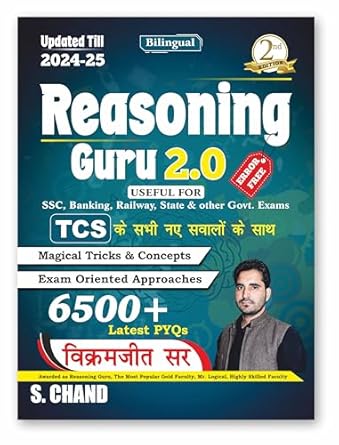- Causes of Problems
- Maintaining Interest
- Maintaining Effective
- Errors Analysis
- Speed and Accuracy
Problems of Teaching - Syllabus and Important Questions
Problems of teaching in mathematics arise due to various factors. Details of factors/causes are as under:

Internal Causes
| Physical Causes | Psychological Causes |
| (a) Schonell found that about 75% backwardness is due to the various types of physical diseases and defects. Burt also investigated that about 30% of backwards were poorly nourished, 10% very seriously ill nourished, 37% were suffering from tensils, speech defects. | (b) According to Burt 9% back ward children suffer with neurotic condition and 2% were very excitable and emotional. |
| Dumbness | Emotional instability |
| Defective eye sight | Lack of interest |
| Hard of hearing | Mental retardedness |
| Speech defects | Poor intelligence |
| Chronic diseases | Low I.Q. (according to Burt the backward children have I.Q. less than 85) |
| Physical ailment | Nervousness |
| Other physical defects | Anxiety |
| Postural defects | Emotional maladjustment |
| Immature birth | Negative attitude of the child |
| Hurt at birth | Mental hurt |
| Other causes | Other psychological causes |
Mathematics which is an interesting subject is considered as a dry, hard and uninteresting one by the common persons and students. The main reason behind it is the lack of interest in the learners to the subject and tendency to memorize the content without comprehension. The content memorized or learnt without comprehending it, is generally forgotten. Therefore, to arouse and maintain the student’s interest in mathematics is a major problem for the teacher. This problem can be overborne by applying appropriate devices and techniques of teaching. A natural curiosity should be awakened among the students by presenting the things in an exciting manner. This awakening of curiosity would create interest in them and develop their attention towards the subject.
It is a well known fact that students work most effectively at task in which they are genuinely interested. Students readily become interested in a thing which in new or exciting and perceived b them to be useful in their life. So, the teaching can be made more effective and interesting by correlating the subject matter with the things already studied or known by the students. Thus, the elements of novelty, usefulness, curiosity and relatedness are primary stimuli for awakening the interest. Some special devices and activities may also be adopted to arouse and maintain the interest in the subject.
Maintaining Interest in Mathematics
The most important task of a mathematics teacher, especially at secondary level, is the creation of interest in the students towards the mathematics and to maintain it. This is not an easy task. The teacher has to do a purposeful planning for it. The use of stimuli is also essential for it. Novelty, utility, curiosity and relatedness are basic stimuli for awakening the interest in the subject. It is easier to develop interest in the student to their work but it is difficult task to keep them interested after the novelty work is worn off. So, the teacher should always try to keep interest alive by making the teaching interesting.
Activities to be employed to maintain the interest in Mathematics:
- Intellectual Activity
- Motivation
- Multi-sensory aids and devices
- Knowledge of practical utility
- Correlation with other fields of study
- Emphasis on vocational value
- Emphasis on recreational value
- Practical work
- Follow the principle of change
- Provide the psychological conditions for study
- Precision of suitable physical conditions for study
- Individual attention.
Maintaining Effective Learning in Mathematics
Learning is a dynamic process. It takes place through so many activities and avenues. The learning of mathematics involves various activities such as reading, writing, computing, comparison, analysing, interpreting, thinking, questioning, working with material objects etc. In all these activities reasoning and logical thinking is common. The suitable planning of these activities leads to desired understanding of the subject.
The effective or meaningful learning is a product of effective teaching. It can also be said that effective teaching induces effective learning. It is very difficult to give a specific formula for effective teaching but certain measures and techniques can be adopted to make the teaching, effective. Some important suggestions in this regard may be:
- Selection and organisation of content of mathematics according to age and mental level of students.
- Adoption of simple and interesting method for presenting the content.
- Providing sufficient opportunities for exercises and practice.
- Frequent application of knowledge and skills learnt by the students to avoid forgetting.
- There should a provision for individual differences in the instructional procedure.
- The aims and objectives of teaching the subject and its particular topic should be very clear.
- Efforts for transfer of learning to other fields.
In view of organisation and application, mathematics is a cumulative and continuously expanding subject. While presentation a new content, a teacher has to face four main instructional problems:
- To help the students in achieving the initial understanding of new concepts and their relations.
- To help the student in making the threshold understanding into a sound and comprehensive understanding.
- To help in maintaining the attained knowledge and skills.
- To help in preparing the background for significant transfer of attained knowledge and skills to their physical, social and intellectual environment.
Errors Analysis
What is an error?
A systematic step by step procedure is known as algorithm. When students are asked to solve a problem, they try to bring to their mind to the procedure, the algorithm that they have learnt in their classes.
In doing so some gaps arises as mentioned below:
- Concept and definition
- Rules for carrying out the steps
- The flow of and relation between the steps leading to the procedure as a whole.
These gaps or error are called bugs.
Types of Errors
Some of error are easy to correct because they do not have a deeper, alternative conception behind them. This type of errors called as bugs, for example, students often interchange H.C.F & L.C.M. This error can be remove easily.
Some times it’s very hard to correct because they are rooted in alternative conceptions. This type of errors called as stereotypes.
For example, students take the H.C.F. of numbers which are relatively prime such as 8 & 9, to be 0 not, due to common factors because absence of what one is looking for shown by the zero.
Questions: Give examples of prime numbers
Answer: 7, 9, 11, 13, 15,…..
Error: Students takes 9, 15,…. Etc (odd composite number) as prime.
Type: stereotype, replacement of more complex by a similar concept.
Discussion: The students has forgotten that prime number is not divisible my any other number than 1 and itself. Students fail to notice that 9 is divisible by 3 and 15 id divisible by 3 and 5.
Students replace the concept of prime by a relatively simpler, easier to remember concept of odd.
Remedy:
- Student should be confirmed that 9, 15, are odd, but not prime.
Now student can conclude the primeness of natural number by checking whether the number is divisible by all primes less than it. - Student fail to comprehended that number may be classified in two different ways.
1. Odd/Even
2. Prime/Composite
An odd number can be neither a prime or student may ask to enter the numbers beginning with 2 in appropriate position as indicated
Odd
Prime 3, 5, 7, 11,
Composite 9, 15, 21,
Even
Prime 2
Composite 4, 6, 8, 10,
Speed and Accuracy
Speed and Accuracy both are interlinked terms used in Mathematics. Speed without accuracy is of no use. An expert teacher is he who is able to solve the problems with the wink of an eye. So in teaching learning process. Firstly the students are taught how to solve the problems correctly and then they are learnt to enhance their speed by drill and practice. Speed and accuracy plays a vital role in every work of life not single in mathematics, e.g. a typist first learn identification of letters in key-board and then he types them slowly. After regularly practice, he gains speed with no faults in typing. His fast typing is speed and typing correctness is accuracy. Hence, term speed and accuracy runs altogether in every field where value is the main aims. Value refers to quality here. Here same principle is applied to the engineers who prepare shoftwares. The engineers can only when he said skilled in their field, if their product out put serves both speed and accuracy, their product will be appreciated and soon well bring a good name. Similarly, teachers, doctors, bakers, engineers, customers, shopkeepers etc. and even housewives should have both speed and accuracy in mathematical skills. For example if a mathematical teacher is unable to solve the problems in the class with speed and accuracy, he cannot be an effective teacher for his students. Generally, housewives go for shopping and they have to calculate whether the price and total cost of brought things are correct or not speedily and accurately because it they take more time to calculate, then the shopkeeper might get busy with other customers and then after it is not possible to realize his mistake despite of nagging. Thus speed and accuracy is in mathematics are important every where.
If a child solves a problem with speed but not accurately then it is of no use. Therefore, priority should be given to accuracy and then through drill and practice speed should be increased. Speed and accuracy are the symbol of intellectual abilities of an individual. In this support Locke has well remarked that, Mathematics is a way to settle in the mind of the children a habit of reasoning. Thus, speed and accuracy occupy a very important place in mathematics as well as in our daily life. So a mathematics teacher should try to train his students in acquiring both speed and accuracy.”
Reasons Behind Dropping in Speed and Accuracy in Mathematics:
For better result or output fully devotion to anything is the must thing. This can only when be gained if we are not falling victim distraction. Distracting attention from real aim will certainly drop both the speed and accuracy. It is obvious that fast speed, falls somewhat accuracy, but these both can be maintained if whole attention is to the aim to which we are involved. In job work, a machinist pays full attention to job, all distracting elements are kept away from him to gain speed and accuracy both. There are several reasons for a lack of speed and accuracy in mathematics. Some of the reasons are as follows:
- Untimely accomplishment of the work.
- Lack of imagination and power of memorization
- Lack of capacity to take quick decision
- Negative attitude towards maths
- Readiness and concentration deficiency
- Less ability to analyses the problem
- Weakness in calculation skills
- Weakness in oral work
- Overwriting and cutting in calculation work
- Wear blinkers while examining the work
- Not to represent rough work in right manner
- No chance to improve faults
- Lack knowledge of fundamental operations, rules and formulas of mathematics
- Wrong representation of digits and numbers on black board and answer sheets
- Want of alertness towards mathematics
- Untimely observation and unfit direction to students work
- No encouragements to students at right work
- Lack of self confidence and self dependability
- From the above points we can conclude that mathematical is such subject that needs both speed and accuracy to give outcomes in better proportion. Both the teacher and student are responsible to maintain it.
Means Adopted to Develop Accuracy in Mathematics: one things can do nothing it is common fact. Great men have also shared their experiences saying that, “It takes two to make quarrel.” Then in mathematics, what does alone speed can do? Same is the case in life or universe, it needs couple to bring necessary change with speed, accuracy is also necessary to bring a change. If there is no change, there is no progress. If a person is on in his action, but he gain no quality or accuracy in work, his gain is considered useless. Specially in mathematics accuracy has the major place in every step as to create good interest in completion of the work. Below are given important suggestions adopting them a teacher can serve his purpose and desired output can also be obtained.
- Encouraging a child to make exact calculations.
- Developing a child habit of verifying calculation.
- Discouraging the students on wrong calculation and removing their mistakes.
- Providing the students remedial teaching finding their faults.
- Teaching the child to write correct words, numbers and sentences.
- Examining the students in fundamental operations, rules and formulae to develop their mechanical skills.
- Applying diagnostic approach to determine students faults.
- Developing in students the habits of analyzing and grasping the problem.
- Developing in students the habit to write down or to copy on from the black board.
- Clarifying the students that what is given? What is to determine? And how is it to be determined? In a question, before solving it.
- Emphasizing the students for drill work.
- Suggesting the students to write the method of calculation as to find the committed fault of any.
- Developing in students habit to draw figures and diagrams head in mathematics.
- Giving more emphasis on accuracy than speed.
- Developing in students habit to grasp question exactly them to solve.
From the above discussion it is clear that purpose of teaching in mathematics can only when be served, if a mathematics teacher knows all the measures how to develop speed and accuracy. Undoubtedly, Speed and accuracy in mathematics can bring system of teaching to a great height and thus, present increasing burden of study can be served by taking speed and accuracy together.




0 Comments